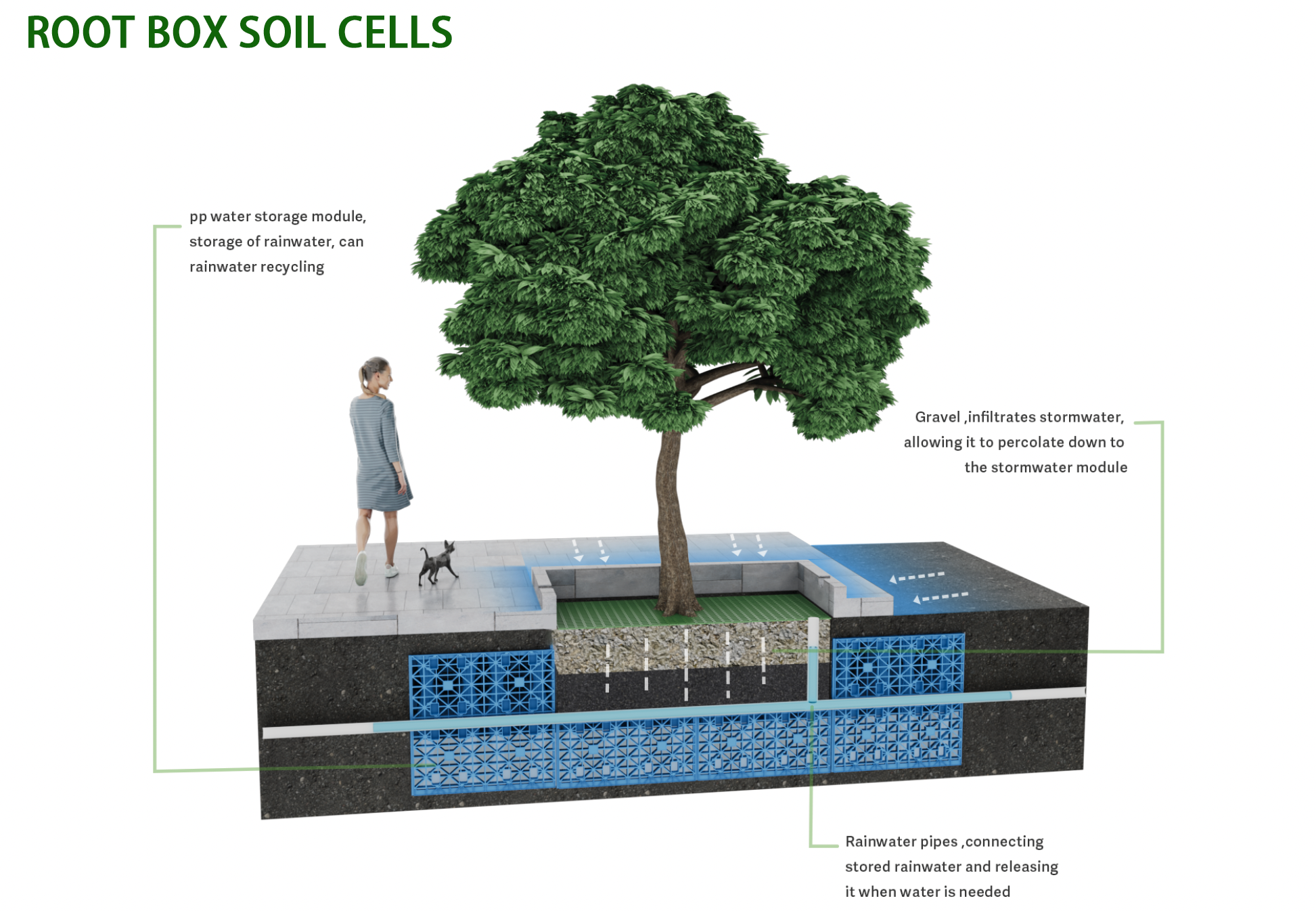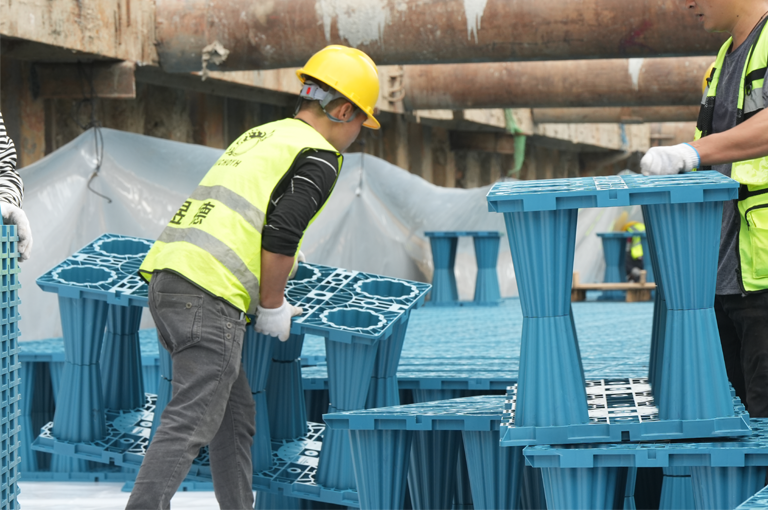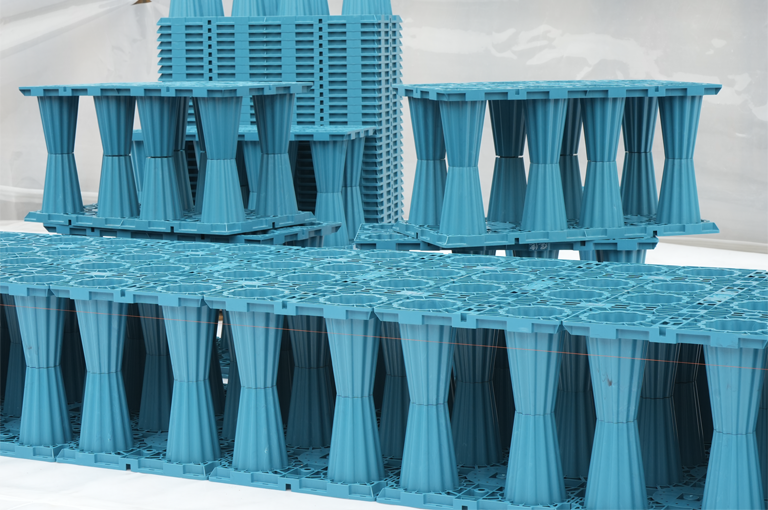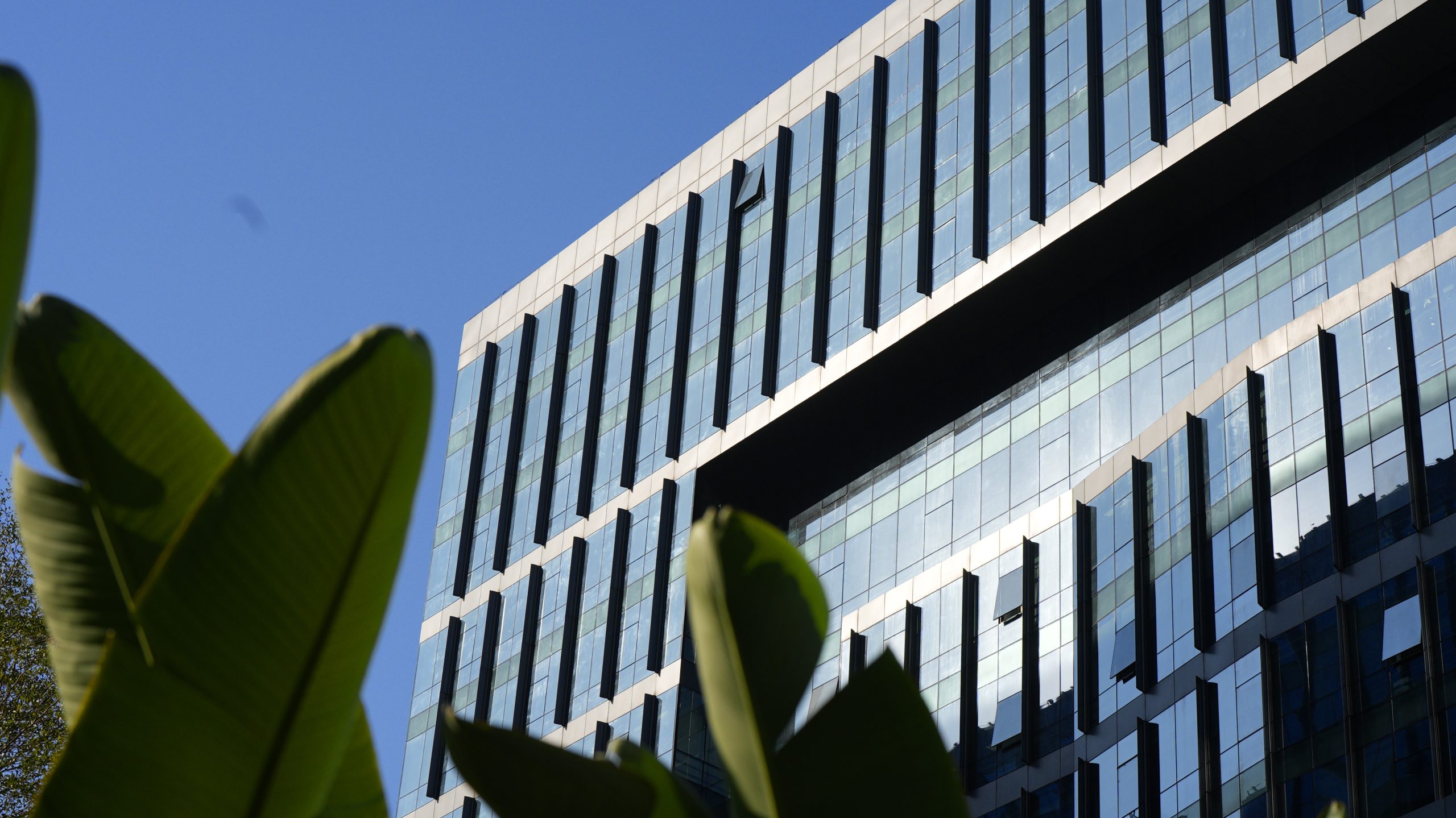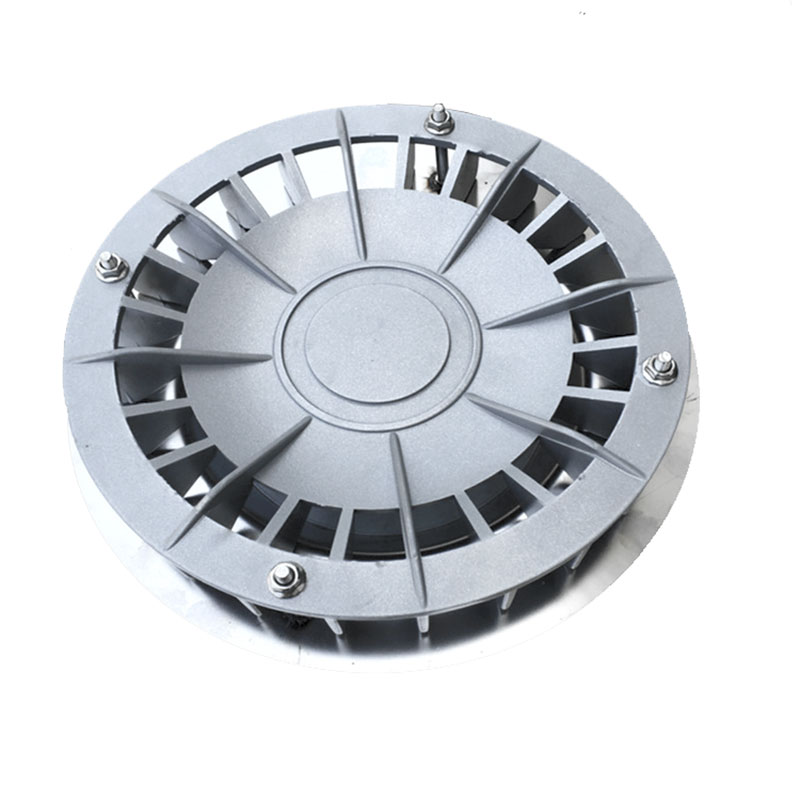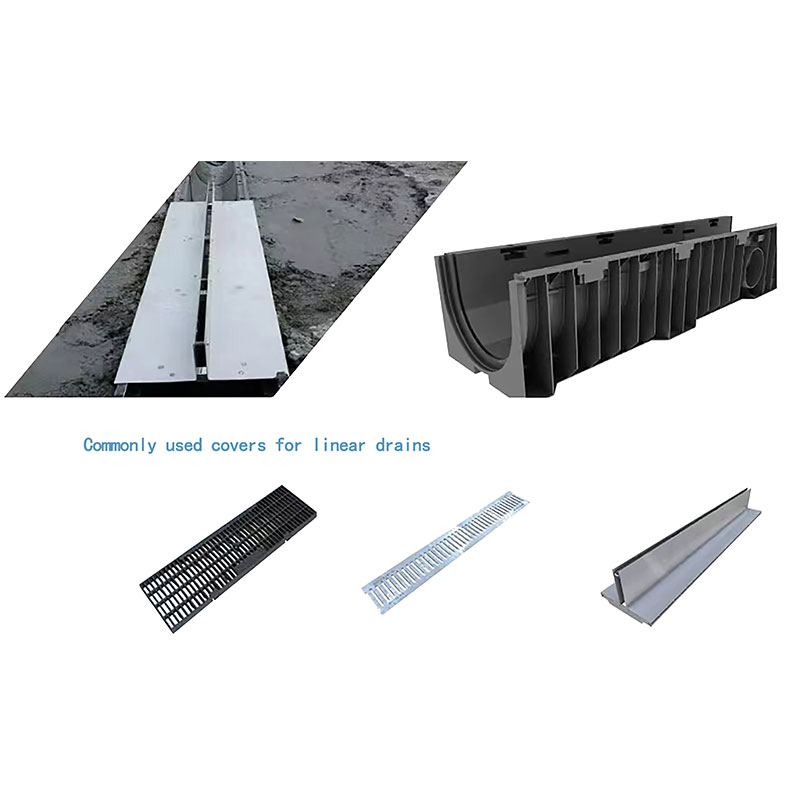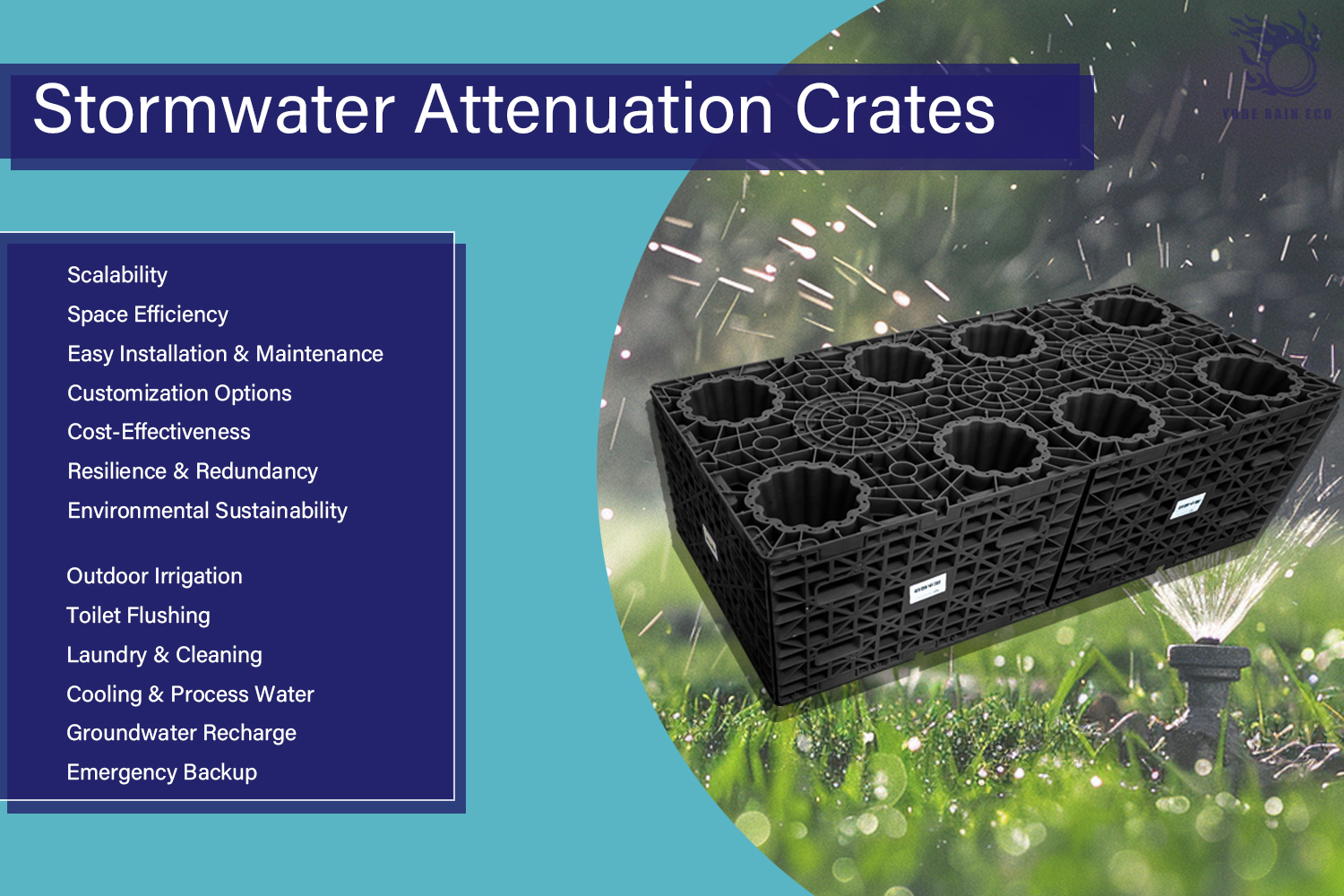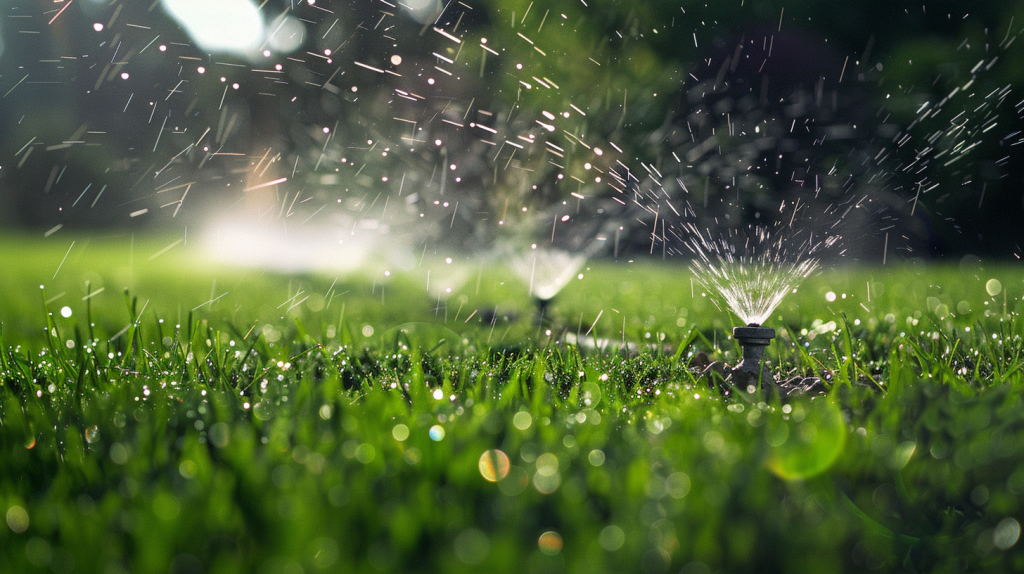Introduction:
In an era of increasing urbanization and climate change, efficient rainwater management has become a critical concern for property owners and urban planners alike. Soakaway crates, also known as attenuation crates or infiltration tanks, have emerged as a popular and effective solution for managing surface water runoff and preventing flooding. This comprehensive guide will walk you through the process of installing soakaway crates, exploring their benefits, and providing expert insights to ensure your drainage system operates at peak efficiency.
1. Understanding Soakaway Crates and Their Importance
Soakaway crates are modular, lightweight structures designed to collect and slowly release surface water into the surrounding soil. These systems play a crucial role in sustainable urban drainage systems (SUDS) by mimicking natural drainage processes and reducing the burden on traditional stormwater infrastructure.
According to a study by the UK Environment Agency, properly installed soakaway systems can reduce surface water runoff by up to 80% in residential areas. This significant reduction not only helps prevent localized flooding but also contributes to groundwater recharge and improved water quality.
2. Site Assessment and Planning
Before installing soakaway crates, it’s essential to conduct a thorough site assessment.
2.1 Soil Percolation Test
Perform a soil percolation test to determine the soil’s ability to absorb water. The test involves digging a hole, filling it with water, and measuring the rate at which the water level drops. Ideal soil percolation rates for soakaway systems range from 15 to 75 mm per hour.
2.2 Groundwater Level Assessment
Check the groundwater level to ensure there’s sufficient distance between the bottom of the soakaway and the water table. A minimum separation of 1 meter is typically recommended to prevent contamination and ensure proper functioning.
2.3 Location Planning
Choose an appropriate location for your soakaway crates, considering factors such as:
- Distance from buildings (at least 5 meters)
- Proximity to trees and their root systems
- Slope of the land
- Existing underground utilities
3. Sizing Your Soakaway System
Proper sizing is crucial for the effectiveness of your soakaway system.
3.1 Catchment Area
Calculate the total area of impermeable surfaces (roofs, driveways, patios) that will drain into the soakaway.
3.2 Rainfall Data
Consider local rainfall data, including intensity and duration of storms. The UK Meteorological Office provides detailed rainfall statistics for different regions.
3.3 Soil Type
The soil’s infiltration rate affects the required size of the soakaway. Clay soils, for example, may require larger systems due to slower drainage.
3.4 Design Storm Event
Determine the design storm event you want your system to handle, typically a 1-in-30-year or 1-in-100-year storm event.
Using these factors, you can calculate the required volume of your soakaway system. Yude Rain Eco provide online services to assist with this process.
4. Materials and Equipment Needed
- Soakaway crates (calculate the number based on your size requirements)
- Geotextile membrane
- Pipe connections and fittings
- Granular fill material (e.g., 20-40mm clean stone)
- Excavation equipment (excavator or mini-digger)
- Compaction equipment
- Safety gear (hard hats, gloves, high-visibility vests)
- Measuring tools and string lines
5. Step-by-Step Installation Process
5.1 Excavation
Begin by excavating the area to the required depth and dimensions. Ensure the base of the excavation is level and free from sharp objects or debris.
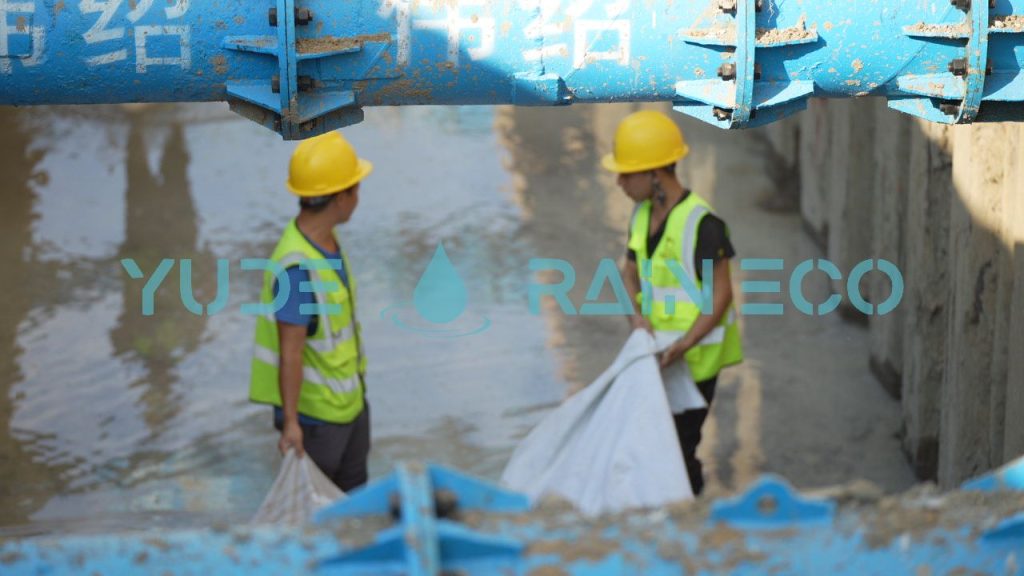
5.2 Prepare the Base
Add a layer of granular fill material (typically 100-150mm thick) to the base of the excavation and compact it thoroughly.
5.3 Install Geotextile Membrane
Line the entire excavation with a geotextile membrane, leaving enough excess to wrap over the top of the crates once installed. This membrane prevents soil particles from entering the system and maintains its efficiency over time.
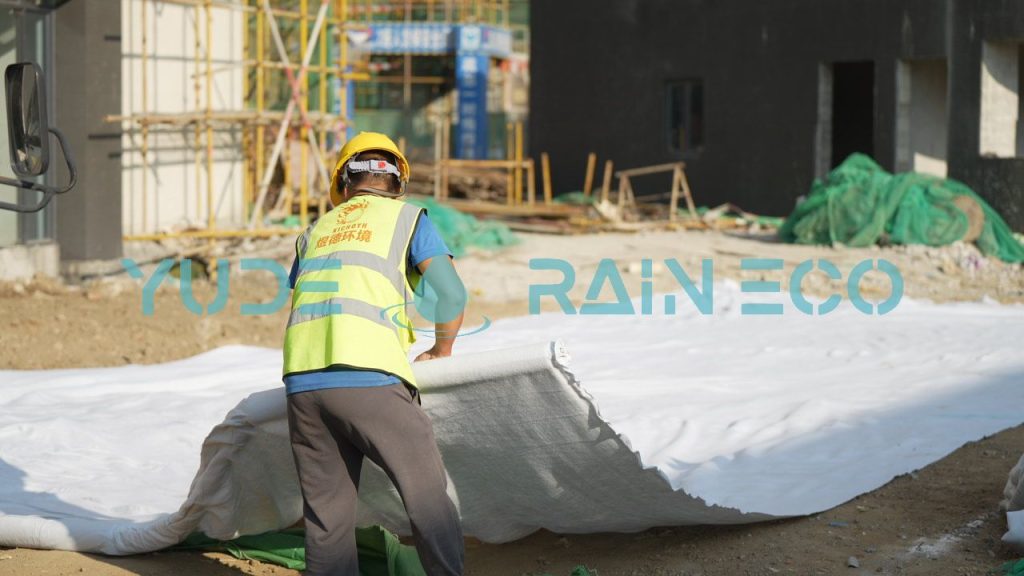
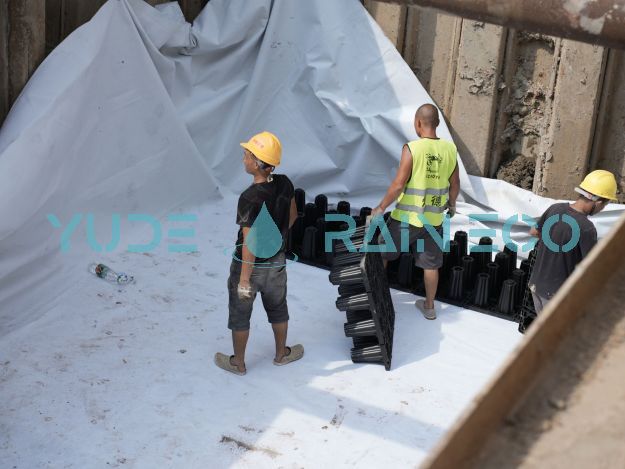
5.4 Assemble and Place Soakaway Crates (continued)
Follow the manufacturer’s instructions to assemble the soakaway crates. Place them in the prepared excavation, ensuring they are level and properly aligned. For larger systems, you may need to stack crates in multiple layers.
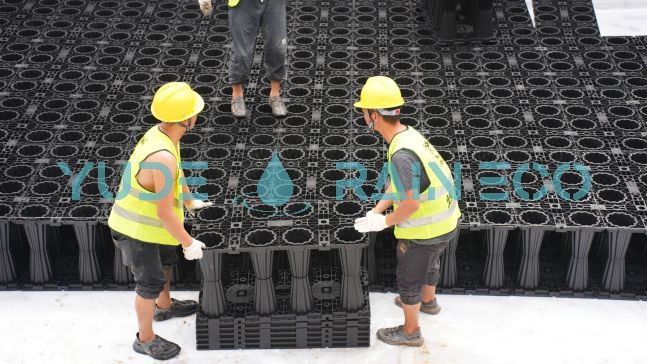
5.5 Connect Inlet Pipes
Install the inlet pipes according to your drainage plan. Most soakaway crates have pre-formed cutouts for pipe connections. Ensure all connections are secure and properly sealed to prevent leaks.
5.6 Wrap and Seal
Once the crates are in place and connected, wrap the excess geotextile membrane over the top of the structure. Seal any joints or overlaps in the membrane to create a continuous barrier.
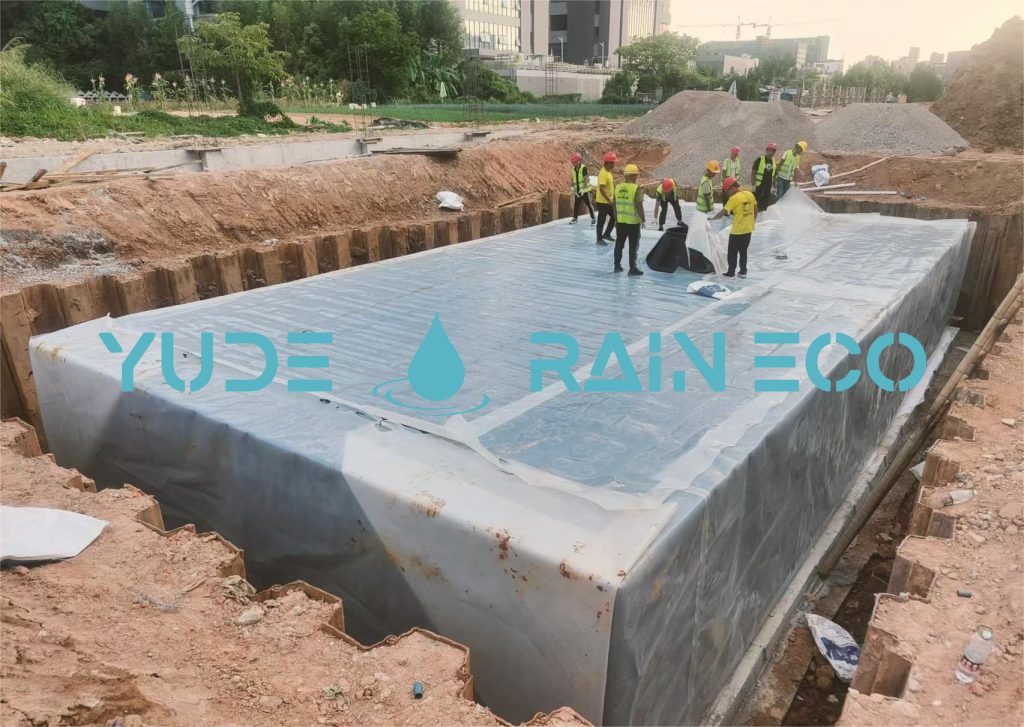
5.7 Backfill
Carefully backfill around the crates with granular material, compacting in layers to ensure stability. Be cautious not to damage the crates or membrane during this process.
5.8 Final Covering
Complete the installation by covering the soakaway with soil, leaving enough depth for grass or other surface treatments as desired.
6. Maintenance and Long-Term Care
6.1 Regular Inspections
Conduct visual inspections of the drainage area and any visible parts of the system at least twice a year, particularly after heavy rainfall events.
6.2 Debris Removal
Keep the area around the soakaway free from debris, leaves, and other materials that could potentially clog the system.
6.3 Filter Maintenance
If your system includes pre-treatment filters or catch basins, clean them regularly to prevent sediment buildup.
6.4 Professional Cleaning
Consider professional cleaning every 3-5 years, depending on usage and local conditions. This may involve flushing the system or using specialized cleaning equipment.
7. Environmental Benefits of Soakaway Crates
Installing soakaway crates offers numerous environmental benefits beyond flood prevention:
7.1 Groundwater Recharge
By allowing water to slowly percolate into the soil, soakaway systems help replenish groundwater resources. A study by the British Geological Survey found that urban areas with effective SUDS can contribute up to 30% more to groundwater recharge compared to areas without such systems.
7.2 Water Quality Improvement
As water filters through the soil, many pollutants are naturally removed. Research has shown that soakaway systems can reduce suspended solids by up to 90% and heavy metals by up to 60%.
7.3 Reduced Pressure on Sewage Systems
By managing stormwater at the source, soakaway crates help reduce the load on municipal sewage systems, potentially decreasing the frequency of combined sewer overflows (CSOs) which can harm aquatic ecosystems.
8. Cost Considerations and Return on Investment
8.1 Installation Costs
The cost of installing a soakaway system varies depending on size, location, and local labor rates. On average, a residential system might cost between £2,000 to £5,000.
8.2 Reduced Flood Risk
The primary benefit is the reduced risk of property damage due to flooding. The Association of British Insurers estimates that the average cost of flood damage to a home is around £30,000.
8.3 Lower Water Bills
In areas where stormwater charges apply, effective on-site drainage can lead to reduced water bills.
8.4 Increased Property Value
Properties with effective drainage solutions may see an increase in value, particularly in flood-prone areas.
9. Regulations and Permissions
Before installing a soakaway crate system, it’s crucial to be aware of local regulations and obtain necessary permissions.
9.1 Building Regulations
In the UK, the installation of soakaways must comply with Building Regulations 2010, Part H – Drainage and Waste Disposal .
9.2 Planning Permission
While many residential soakaway installations don’t require planning permission, it’s advisable to check with your local planning authority, especially for larger systems or in conservation areas.
9.3 Environmental Permits
In some cases, particularly for larger developments or in environmentally sensitive areas, you may need to obtain an environmental permit from the Environment Agency.
10. Case Studies: Successful Soakaway Implementations
Examining real-world applications of soakaway crate systems can provide valuable insights into their effectiveness and potential challenges. Here are two case studies that demonstrate successful implementations:
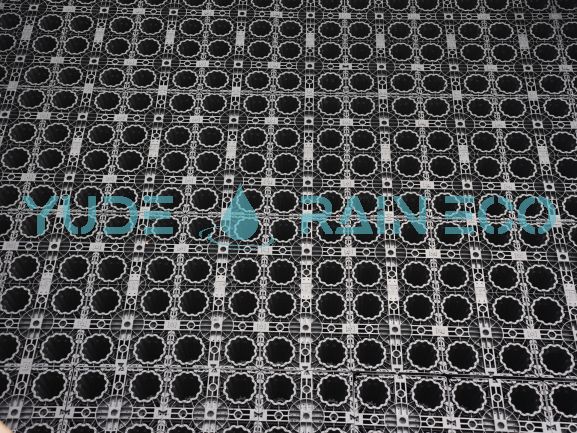
10.1 Residential Development in Surrey, UK
A new housing development in Surrey faced challenges with surface water management due to clay-heavy soil and a high water table. The developers implemented a large-scale soakaway crate system covering 500 m² to manage runoff from roofs and paved areas.
Results:
- The system successfully managed a 1-in-100-year storm event, preventing any flooding issues.
- Groundwater recharge increased by 25% compared to pre-development levels.
- The local planning authority praised the project as an exemplar of sustainable drainage practices.
10.2 Commercial Car Park in Manchester, UK
A large retail complex needed to upgrade its drainage system to comply with new regulations and reduce flood risk. They installed a network of soakaway crates beneath the car park.
Results:
- Surface water runoff reduced by 70%, alleviating pressure on the local sewer system.
- Water quality in nearby streams improved, with a 50% reduction in pollutants from car park runoff.
- The project won a Sustainable Water Industry Group (SWIG) award for innovation in water management.
These case studies highlight the versatility and effectiveness of soakaway crate systems in different contexts and scales.
11. Innovations in Soakaway Crate Technology
The field of sustainable drainage is constantly evolving, with new technologies and materials improving the efficiency and durability of soakaway crate systems:
11.1 Smart Monitoring Systems
Yude Rain Eco now incorporating sensors and IoT technology into our crates, allowing real-time monitoring of water levels and flow rates. This data can be used to optimize system performance and predict maintenance needs.
11.2 Bioenhanced Crates
Recent developments include soakaway crates with built-in biofilters or engineered soils that enhance water purification and promote beneficial microbial activity.
11.3 Modular and Customizable Designs
Newer crate designs offer increased flexibility, allowing for easier customization to fit complex site layouts or retrofitting in existing developments.
11.4 Recycled and Sustainable Materials
Yude Rain Eco are always producing crates from recycled plastics or other sustainable materials, reducing the environmental impact of production and installation.
12. Common Mistakes to Avoid When Installing Soakaway Crates
To ensure the success of your soakaway crate installation, be aware of these common pitfalls:
12.1 Inadequate Site Assessment
Failing to properly assess soil conditions, groundwater levels, and drainage patterns can lead to ineffective or even harmful installations.
12.2 Undersizing the System
Not accounting for future development or extreme weather events can result in a system that’s quickly overwhelmed.
12.3 Poor Installation Practices
Incorrect assembly, inadequate compaction, or damage to the geotextile membrane during installation can compromise the system’s performance.
12.4 Neglecting Maintenance
Assuming the system is “set and forget” can lead to reduced efficiency and potential failure over time.
12.5 Ignoring Local Regulations
Failing to comply with local building codes or environmental regulations can result in costly fines or mandatory system removal.
13. Alternatives and Complementary Systems
While soakaway crates are highly effective, they may not be suitable for all situations.
13.1 Rain Gardens
Shallow depressions planted with native species can provide natural filtration and infiltration for smaller volumes of runoff.
13.2 Permeable Paving
Specially designed paving that allows water to percolate through can reduce surface runoff at the source.
13.3 Green Roofs
Vegetated roof systems can significantly reduce runoff from buildings while providing additional insulation and biodiversity benefits.
13.4 Rainwater Harvesting
Collecting and storing rainwater for non-potable uses can complement a soakaway system by reducing overall runoff volume.
14. Future Trends in Sustainable Drainage
14.1 Nature-Based Solutions
Integrating natural processes and ecosystems into urban drainage design is gaining traction, with concepts like “sponge cities” being implemented in various countries.
14.2 Climate Resilience
Future drainage systems, including soakaway crates, will need to be designed with greater resilience to extreme weather events and changing climate patterns. This may involve increased capacity, more robust materials, and adaptive management strategies.
14.3 Water Reuse Integration
There’s a growing trend towards integrating stormwater management systems with water reuse technologies, creating closed-loop systems that reduce overall water demand.
14.4 Urban Planning Integration
Sustainable drainage solutions like soakaway crates are increasingly being incorporated into broader urban planning strategies, with a focus on creating multifunctional spaces that manage water while providing amenity value.
14.5 Artificial Intelligence and Machine Learning
The use of AI and machine learning in drainage system design and management is expected to increase, allowing for more precise predictions of rainfall patterns and system performance optimization.
15. Economic Impact of Effective Stormwater Management
15.1 Reduced Infrastructure Costs
By managing stormwater at the source, soakaway systems can reduce the need for expensive municipal stormwater infrastructure upgrades. A study by the UK’s Construction Industry Research and Information Association (CIRIA) found that SUDS can reduce infrastructure costs by up to 30% compared to traditional drainage systems.
15.2 Flood Damage Prevention
The UK Environment Agency estimates that every £1 spent on flood protection saves £9 in flood damage. Soakaway crates play a crucial role in this flood prevention strategy.
15.3 Ecosystem Services
The environmental benefits provided by soakaway systems, such as improved water quality and groundwater recharge, have economic value. The UK National Ecosystem Assessment estimates that urban green and blue spaces, which include sustainable drainage features, provide ecosystem services worth billions of pounds annually.
15.4 Job Creation
The growing sustainable drainage sector creates jobs in manufacturing, installation, maintenance, and related fields. A report by the Green Alliance suggests that investments in green infrastructure, including SUDS, could create up to 40,000 jobs in the UK .
Contact now:
Installing soakaway crates is a crucial step towards creating more resilient and sustainable urban environments. By effectively managing surface water runoff, these systems play a vital role in flood prevention, water quality improvement, and groundwater recharge. The process of installation, while requiring careful planning and execution, offers long-term benefits that far outweigh the initial investment.
Whether you’re a homeowner looking to protect your property from flooding, a developer aiming to meet sustainability requirements, or a local authority planning for climate resilience, soakaway crates offer a versatile and effective solution. By contact Yude Rain Eco and staying informed about the latest developments in sustainable drainage, contribute to a more water-wise future.


